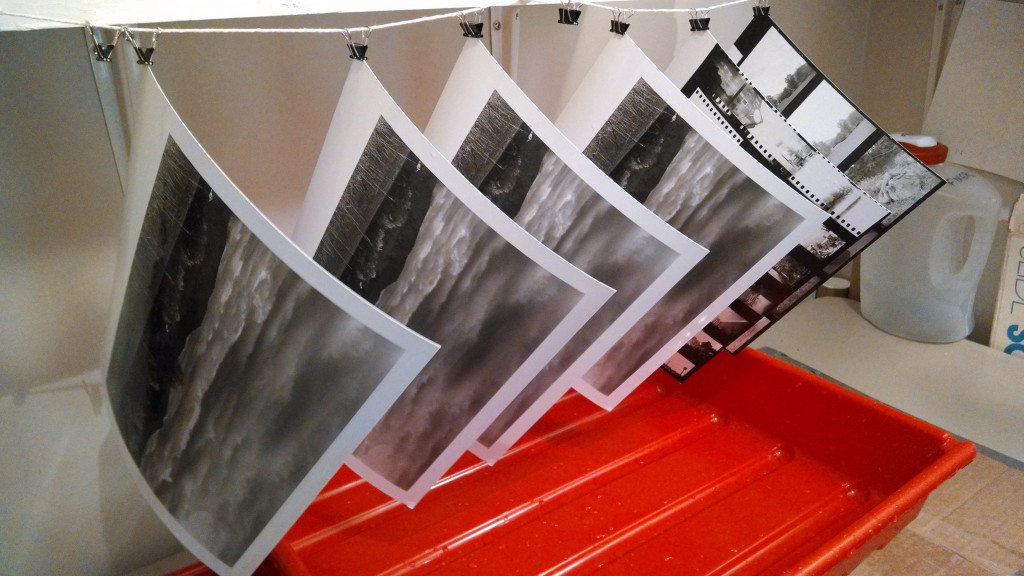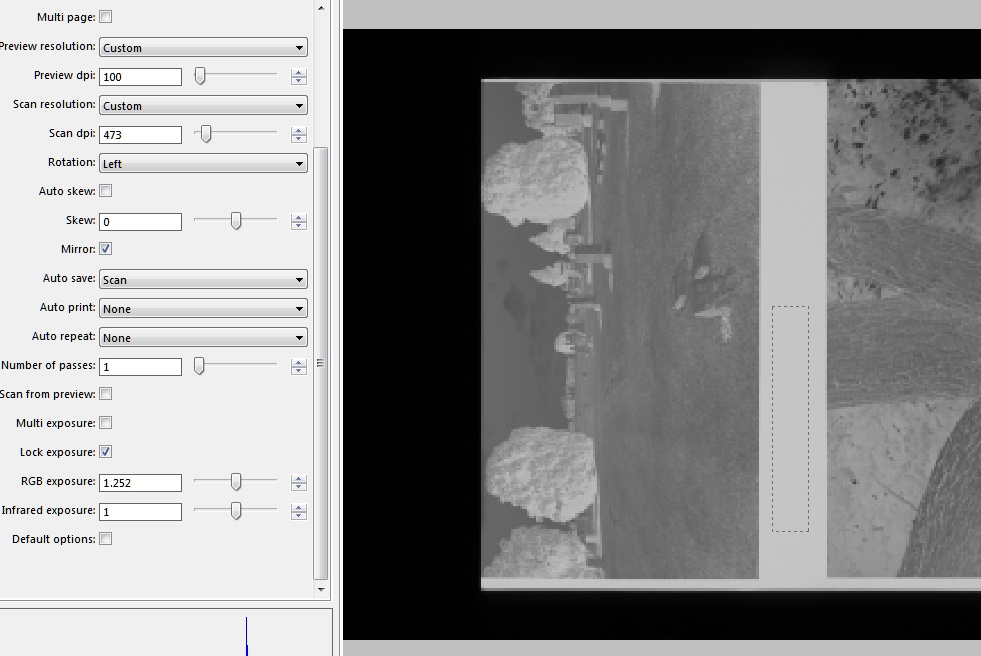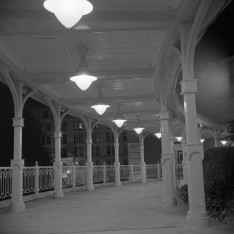Before I start, a little warning: fresh D76 stock is a clear fluid which looks exactly like water. Mixed indicator stop bath could easily pass for orange juice at first glance. Fixer doesn’t look like anything bad either (the smell ought to be sufficient deterrent, though). DO NOT store chemicals anywhere they might be mistaken for something to drink. DO NOT store them anywhere children or pets might get into them. DO label chemical bottles carefully as to their contents (this isn’t just for safety, it’ll save you from ruining film by getting the bottles mixed up). This should of course be obvious and common sense, but we live in a very stupid world where bags of peanuts have to carry a “warning! contains nuts” and hot coffee has to warn you that it is, indeed, hot, so consider the above a legally-binding disclaimer! Or to put it another way if you or your loved ones accidentally drink your photo chemicals, it’s YOUR OWN BLOODY STUPID FAULT, capisce? We now return to our regular scheduled programming…
After a couple of years using a Rodinal variant as my black and white film developer, I decided to give good old D76 a try. However this introduces an issue I’ve not had to worry about with R09: careful storage.
R09/Rodinal concentrate is reputed to keep almost indefinitely, even in a partially full container (a very nearly empty container may be a problem, I’ve lost a roll to what may well have been exhausted developer and I know at least one other black and white film shooter with a similar experience; that’s a whole other topic though). By contrast, mixed D76 stock solution has a definite shelf life and exposure to air will cause it to go off.
Now if I was re-using/replenishing the stock solution that would be no problem. I’d keep it in a well-sealed 1 gallon container. But developer re-use is another variable introduced into the mix and more importantly it’s a variable which can’t be measured or controlled, merely guessed at based on the number of rolls of film that have been through the soup. Instead, I’ve opted for the 1:1 dilution and one-shot use option, so when it’s time to develop a roll I’ll mix at least 8oz (240ml) of D76 stock with an equal amount of water, discarding the mix when I’m done. This raises the question of how best to store the stock solution.
I started out with four 1 quart wide-mouth plastic bottles which originally held Powerade/Gatorade, a type of bottle I’ve been using for a while to store mixed stop and fixer. To that I added a couple of bags of glass marbles. As I used developer from the bottle I added marbles in to bring the fluid level to the neck again, keeping only the smallest bubble of air in the top. It did not take long to realize that with enough developer removed it was impossible to get the fluid level to the top. I soon found out just how quickly D76 will go bad, in this case it had turned yellow within a week! Also, it gets to be a real pain to measure out the stock solution while fighting with marbles that also want to escape from the bottle. That’s the sort of repellent problem which makes me want to just put the developing gear away and watch TV until my senses have been numbed and my brain oozes out of my ears. So, I had a re-think.
There are concertina style bottles available for this type of chemical storage. I’m sure they’re very good, but they run several dollars per bottle not counting shipping. I wanted to see if I could find something more readily available.
To use D76 at 1:1 dilution with water, you need a minimum of 8 ounces of stock solution per roll of 35mm/36 exposure or 120 film, otherwise the development time must be increased. That’s OK, I generally develop one roll at a time anyway. So I figured the best thing to do was split part of the mixed D76 into smaller bottles, each one suitable for one roll of film, and went hunting for some 8oz bottles which would fit the bill.
What I found, indeed the only thing I found, was the 6-pack of Mott’s Apple Juice which comes in nice sturdy 8oz bottles. $3.50 at Kroger. Perfect.
So now, I mix my gallon of stock solution from the powder and split 3 quarts of it into my existing 1 quart plastic bottles which are clearly marked with their content and mixing date. The remaining quart is split out across four 8oz bottles, similarly marked.
I develop at room temperature, adjusting development time to compensate, so all I need to do is grab 8oz of D76 and 8oz of water at room temperature and mix them together. The small bottles are either completely full or completely empty so exposure to air is not a problem.
After 4 rolls, the 8oz bottles are all empty and I transfer the contents of a 1qt bottle into them, so my 1qt bottles also are either full or empty, nothing in between. In fact, since I have an extra couple of bottles, I can transfer out a quart of the developer into smaller bottles as soon as I have 4 of them available for use.
After 16 rolls, I’ll mix another batch from the 1 gallon powder mix and start over.
Now, there’s a wrinkle I haven’t brought up yet. My minimum 16oz (480ml) of 1:1 mixed developer is more than enough to cover a single 35mm reel in my 2 reel Arista Premium developing tank. However, I need 590ml to cover a single roll of 120 in this tank, which I round up to 600ml (20oz) for ease of measuring. In practice, I can mix my 8oz of developer with 12oz of water for a 1:1.5 dilution and get results I personally can’t tell the difference with. A densitomiter reading would, I’m sure, show a difference, but I can’t tell just by looking at or scanning the negatives compared to those done at 1:1. I’ll be curious to see if it affects printing any, but I can’t imagine it would.


 My first two rolls of
My first two rolls of